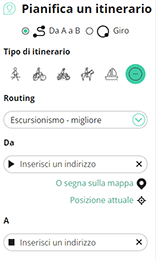Risorsa: Saint Lazarus in Barcelona (1925). Author: Josep Salvany i Blanch. Source: Biblioteca de Catalunya.
![]() | | Pubblica
| | Pubblica
Plaça del Pedró, 2 bis, 08001 Barcelona, Spagna
Scopri gli itinerari più belli e popolari della zona, accuratamente raggruppati in apposite selezioni.
Risorsa: Saint Lazarus in Barcelona (1925). Author: Josep Salvany i Blanch. Source: Biblioteca de Catalunya.
Scopri i luoghi di interesse più belli e popolari della zona, accuratamente raggruppati in apposite selezioni.
Risorsa: Saint Lazarus in Barcelona (1925). Author: Josep Salvany i Blanch. Source: Biblioteca de Catalunya.
Con RouteYou puoi creare facilmente mappe personalizzate. Traccia il tuo itinerario, aggiungi waypoint o nodi, luoghi di interesse e di ristoro, e condividi le mappe con la tua famiglia e i tuoi amici.
Pianificatore di itinerari

<iframe src="https://plugin.routeyou.com/poiviewer/free/?language=it&params.poi.id=2348379&params.language=en" width="100%" height="600" frameborder="0" allowfullscreen></iframe>
Prova questa funzionalità gratuitamente con un abbonamento di prova RouteYou Plus.
Se hai già un tale account, accedi ora.
© 2006-2024 RouteYou - www.routeyou.com